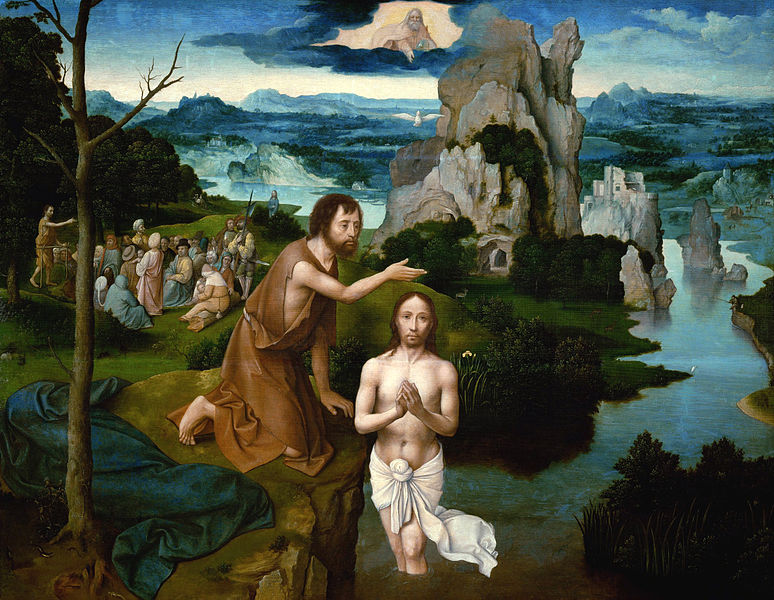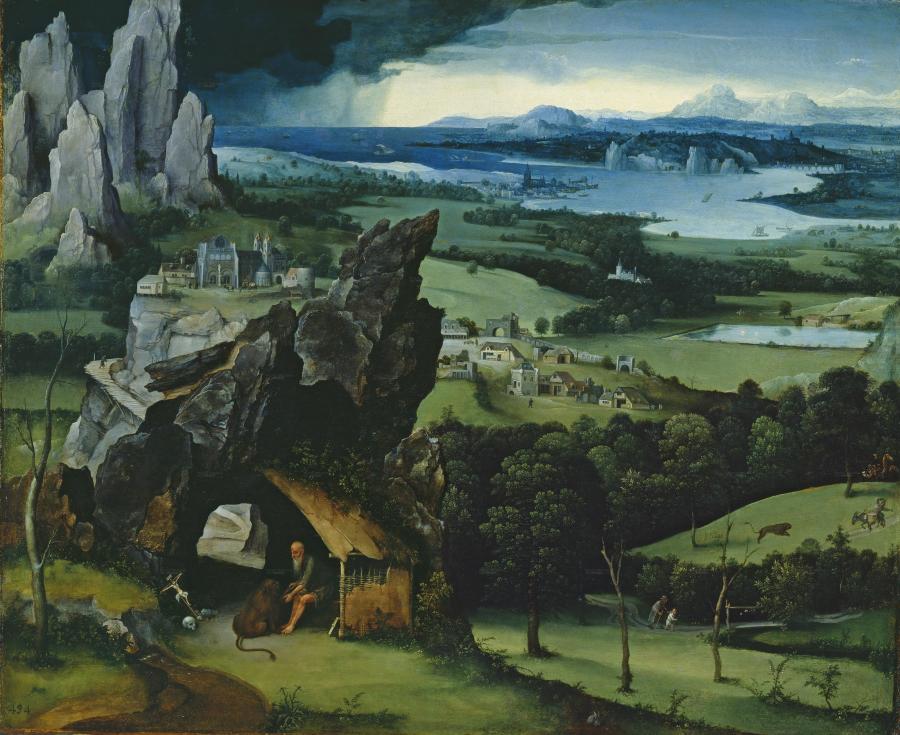Known mostly for his Biblical and mythical themes, the Flemish Renaissance painter Joachim Patinir (c. 1480-1524) was born in the region of Wallonia (in modern Belgium) and worked largely in the city of Antwerp. He is considered the inventor of the Weltlandschaft or “the world landscape” – a presentation that situates the main subjects (legendary or holy figures) within a wide panorama of nature containing monuments, plains, water bodies, rocks and forests. The term Weltlandschaft was first used in the context of Patinir in 1918 by the Austrian art historian Ludwig von Baldass.

According to the book Renaissance and Reformation, 1500-1620: A Biographical Dictionary (2000, Greenwood) edited by Jo Carney:
In his collaborations as well as his own independent works, Patinir was primarily responsible for painting the landscape background, in which he used a three-color formula to suggest deep recession in depth: brown forms in the foreground, blue-green in the middle ground, and a light blue in the background.
In his study Joachim Patinir: Landscape as an image of the Pilgrimage of Life, art historian Reindert Falkenburg claims that the landscapes can be read as “allegories of life’s pilgrimage”. The idea of life as a pilgrimage is derived from Hebrews 11:13 in the New Testament. Man is a stranger on earth, a wandering guest without a home. Death is his destination and subsequent communion with God should be his final goal.
A few of Patinir’s works:






![]()
